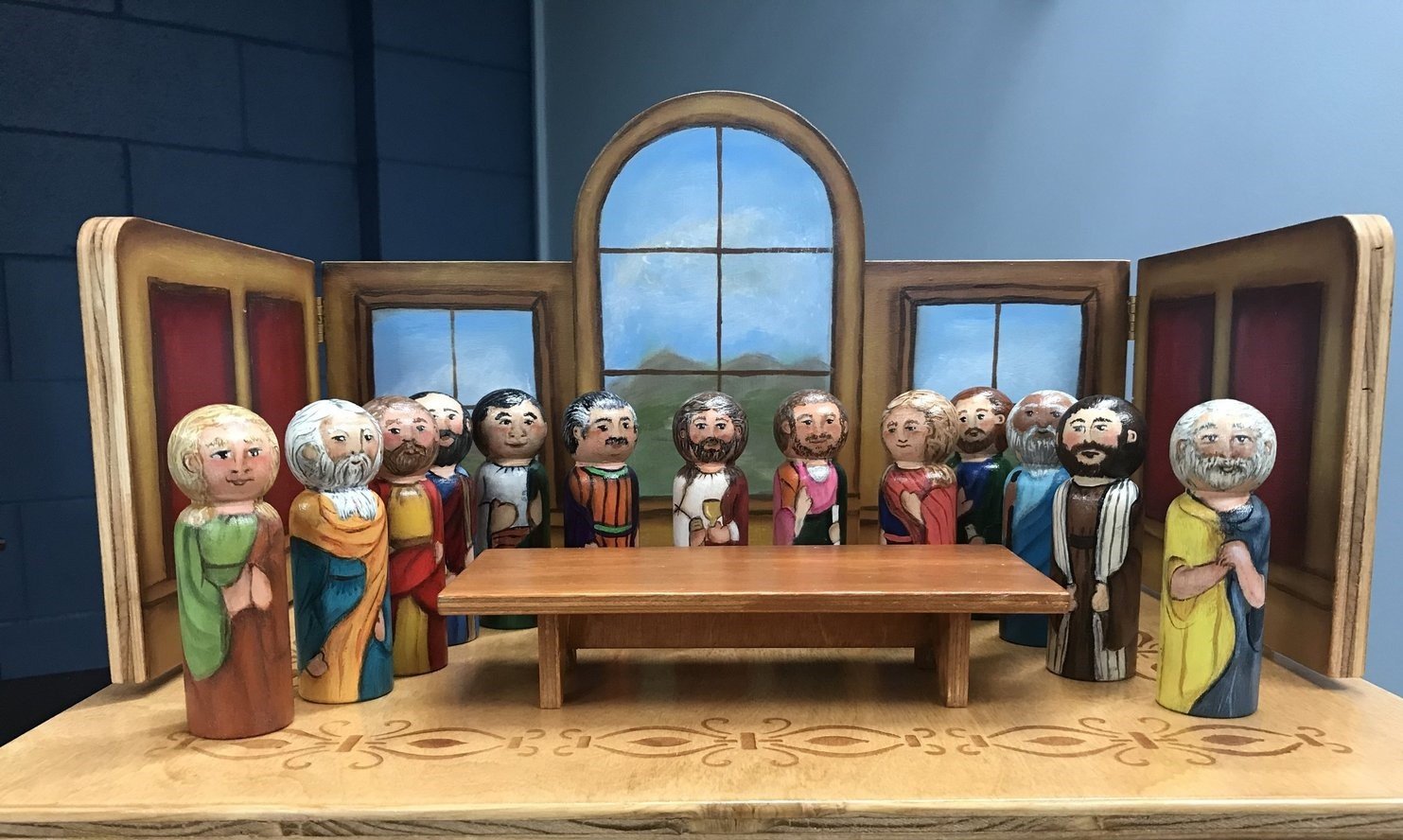
CGS
Catechesis of the Good Shepherd
Leading Our Children to Christ
Catechesis of the Good Shepherd (CGS) is St. Bernard’s religious education program for children from Pre-K (4 years old) through 3rd grade.
CGS nurtures the relationship between two mysteries: God and the Child and facilities the meeting of these two mysteries. Mystery can be defined as an attitude of respect and wonder; recognition that we are standing before something that is knowable and yet beyond our complete comprehension. CGS invites adults and children to want to know and learn more about these two mysteries.
There are three levels of education within CGS: Level 1 (4-6 years); Level 2 (6-9 years); and Level 3 (4th grade). In Level 1, the child discovers a relationship with the Good Shepherd. In Level 2, the child learns their place in creation and that they participate in God's plan. In Level 3 the child discovers that thier life is a blank page to be written with God's guidance.
Catholic, Hands-On Education
The CGS program was developed by two Roman Catholic laywomen in Rome: Sofia Cavalletti and Gianna Gobbi. They were inspired by the educational principles of Maria Montessori, also a Catholic. The materials they prepared for children, since 1954, were based on the Bible, the Roman Catholic liturgy and sacraments, tradition, and Church teachings. In 1985, a Level I course welcomed participants from both Catholic and several other Christian traditions. Since that time, the ecumenical character of the roster for each course has continued. All presentations are offered as given to us by Sofia and Gianna (Catholic) and participants are welcome to adapt them to their own traditions with the encouragement of the national association and help from CGS formation leaders who share their traditions.
Developmental Stage-Specific
CGS is not a traditional style classroom. It is based on principles discovered at the turn of the century when Maria Montessori was a medical student in Italy. She was the only woman in an all male field at the time. She observed many children, their developmental stage and behaviors. From this work, she realized that children learned best when they had the opportunity of self-discovery with hands-on materials. Montessori found that the Church was a great place for this teaching style of connecting children with works and activities that were appropriate for their age and developmental skills. She then created a series of works, where the child is the guide. These works were eventually blessed by Pope Benedict XV. CGS received its name from a bishop in Mexico that recognized the power of the good shepherd parable.
Atriums & Catechists
The Atrium is the place of preparation for this Montessori classroom style and it is prepared for the children to move about, touch materials, discover and develop a relationship with Jesus, the Good Shepherd.
The word “catechesis” is often defined as oral instruction given to catechumens (those preparing for baptism). It is from a Greek word, related to the word “to teach,” and means “resounding” or “echoing down.” It refers to the passing on of the truths of our faith. Though most of the children we serve are baptized in infancy and are not actually catechumens, their catechesis has been delayed until the earliest ages at which they can participate in it.
A catechist’s role in the atrium is not like a traditional teacher. One never explains, and always proclaims. The main task for the catechist is to introduce the Word of God and be a co-listener to God’s word with the children. The catechist must be with the children, listen, learn, and celebrate.




